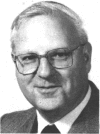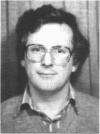Abstract
We have examined the hormone status of ten healthy adult males who completed the Glasgow marathon. Serum thyroxine, free thyroxine, triiodothyronine and thyroid stimulating hormone were unaffected by the exertion. Serum cortisol as well as other steroid hormones, androstenedione, dehydroepiandrosterone sulphate and oestradiol showed distinct rises (p less than 0.01) but serum testosterone fell significantly (p less than 0.01). There was no change in sex hormone binding globulin capacity but a significant fall in LH levels (p less than 0.05) accompanied the fall in serum testosterone. The mechanism of the fall in serum testosterone in this situation requires clarification but it is unlikely to have adverse consequences.
Full text
PDF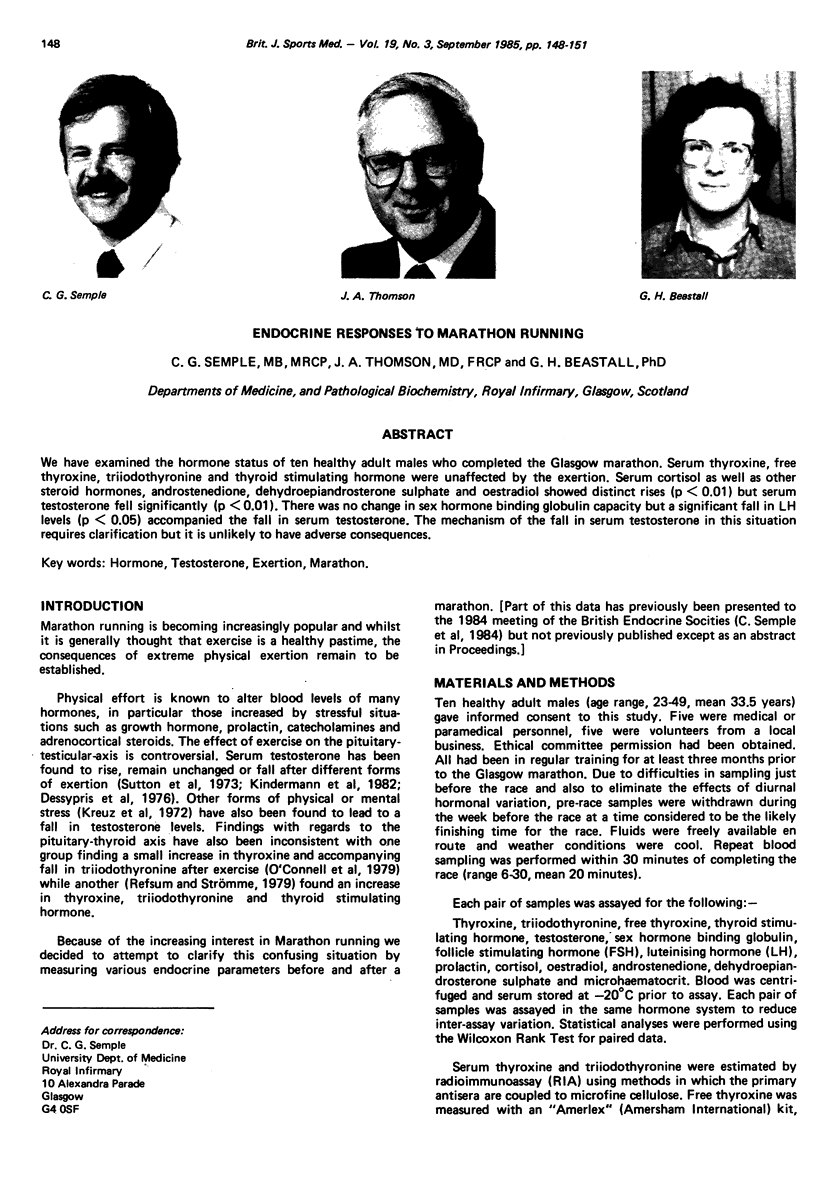
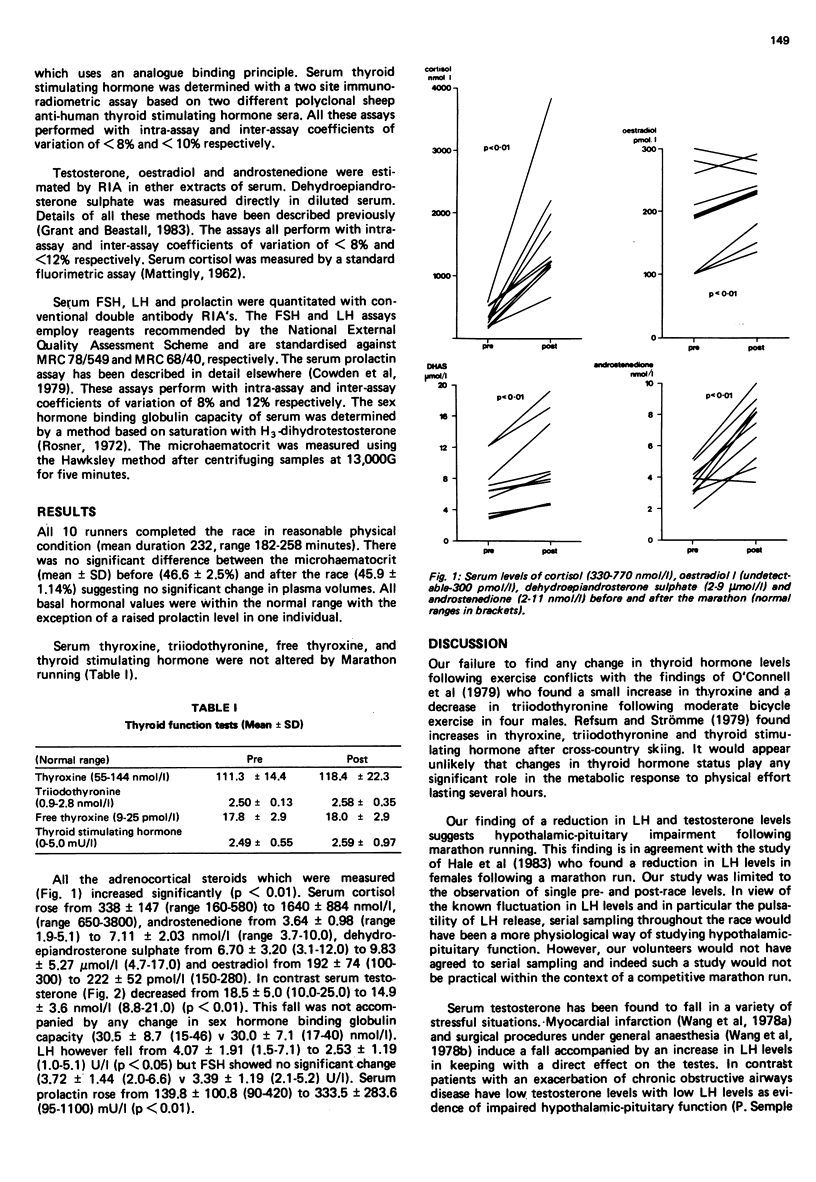

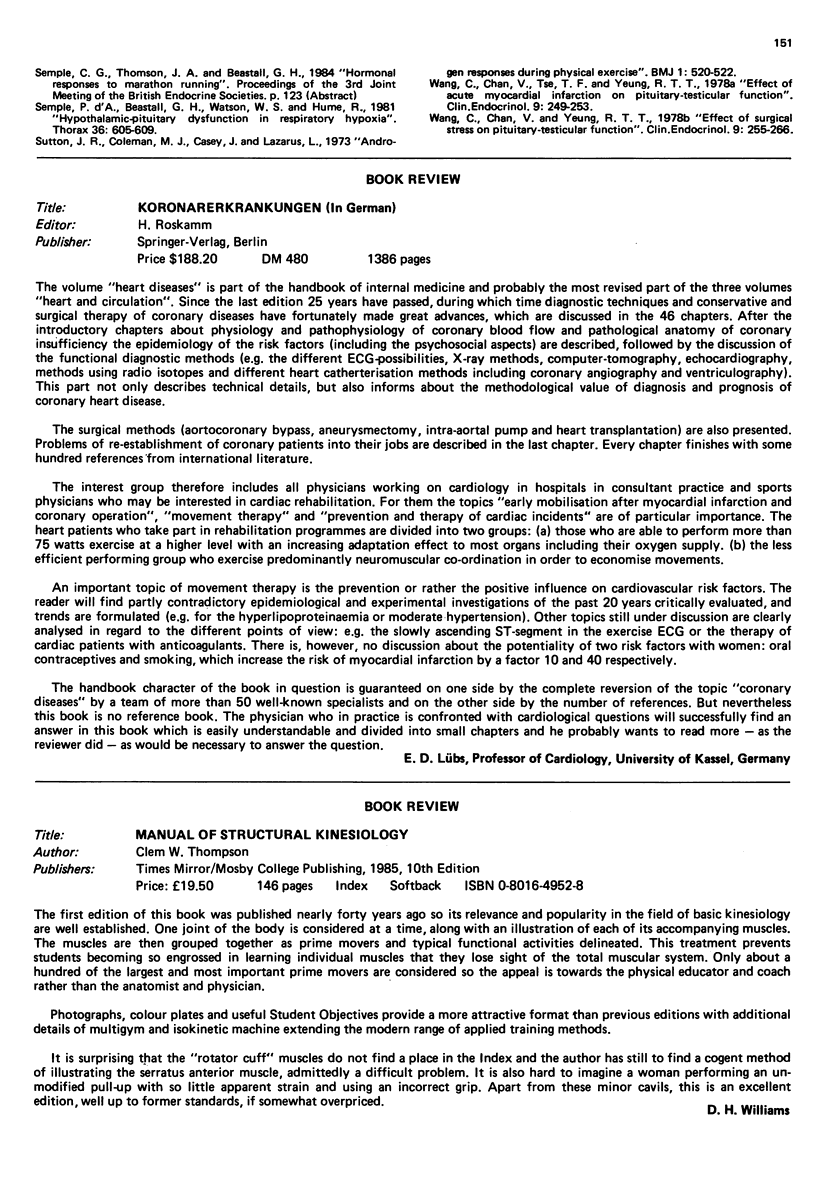
Images in this article
Selected References
These references are in PubMed. This may not be the complete list of references from this article.
- Cowden E. A., Ratcliffe W. A., Beastall G. H., Ratcliffe J. G. Laboratory assessment of prolactin status. Ann Clin Biochem. 1979 May;16(3):113–121. doi: 10.1177/000456327901600126. [DOI] [PubMed] [Google Scholar]
- Cumming D. C., Quigley M. E., Yen S. S. Acute suppression of circulating testosterone levels by cortisol in men. J Clin Endocrinol Metab. 1983 Sep;57(3):671–673. doi: 10.1210/jcem-57-3-671. [DOI] [PubMed] [Google Scholar]
- Dessypris A., Kuoppasalmi K., Adlercreutz H. Plasma cortisol, testosterone, androstenedione and luteinizing hormone (LH) in a non-competitive marathon run. J Steroid Biochem. 1976 Jan;7(1):33–37. doi: 10.1016/0022-4731(76)90161-8. [DOI] [PubMed] [Google Scholar]
- Doerr P., Pirke K. M. Cortisol-induced suppression of plasma testosterone in normal adult males. J Clin Endocrinol Metab. 1976 Sep;43(3):622–629. doi: 10.1210/jcem-43-3-622. [DOI] [PubMed] [Google Scholar]
- Farrell P. A., Gates W. K., Maksud M. G., Morgan W. P. Increases in plasma beta-endorphin/beta-lipotropin immunoreactivity after treadmill running in humans. J Appl Physiol Respir Environ Exerc Physiol. 1982 May;52(5):1245–1249. doi: 10.1152/jappl.1982.52.5.1245. [DOI] [PubMed] [Google Scholar]
- Few J. D. Effect of exercise on the secretion and metabolism of cortisol in man. J Endocrinol. 1974 Aug;62(2):341–353. [PubMed] [Google Scholar]
- Hale R. W., Kosasa T., Krieger J., Pepper S. A marathon: the immediate effect on female runners' luteinizing hormone, follicle-stimulating hormone, prolactin, testosterone, and cortisol levels. Am J Obstet Gynecol. 1983 Jul 1;146(5):550–556. doi: 10.1016/0002-9378(83)90801-3. [DOI] [PubMed] [Google Scholar]
- Kindermann W., Schnabel A., Schmitt W. M., Biro G., Cassens J., Weber F. Catecholamines, growth hormone, cortisol, insulin, and sex hormones in anaerobic and aerobic exercise. Eur J Appl Physiol Occup Physiol. 1982;49(3):389–399. doi: 10.1007/BF00441300. [DOI] [PubMed] [Google Scholar]
- Kreuz L. E., Rose R. M., Jennings J. R. Suppression of plasma testosterone levels and psychological stress. A longitudinal study of young men in Officer Candidate School. Arch Gen Psychiatry. 1972 May;26(5):479–482. doi: 10.1001/archpsyc.1972.01750230089017. [DOI] [PubMed] [Google Scholar]
- MATTINGLY D. A simple fluorimetric method for the estimation of free 11-hydroxycorticoids in human plasma. J Clin Pathol. 1962 Jul;15:374–379. doi: 10.1136/jcp.15.4.374. [DOI] [PMC free article] [PubMed] [Google Scholar]
- Morley J. E., Baranetsky N. G., Wingert T. D., Carlson H. E., Hershman J. M., Melmed S., Levin S. R., Jamison K. R., Weitzman R., Chang R. J. Endocrine effects of naloxone-induced opiate receptor blockade. J Clin Endocrinol Metab. 1980 Feb;50(2):251–257. doi: 10.1210/jcem-50-2-251. [DOI] [PubMed] [Google Scholar]
- O'Connell M., Robbins D. C., Horton E. S., Sims E. A., Danforth E., Jr Changes in serum concentrations of 3,3',5'-triiodothyronine and 3,5,3'-triiodothyronine during prolonged moderate exercise. J Clin Endocrinol Metab. 1979 Aug;49(2):242–246. doi: 10.1210/jcem-49-2-242. [DOI] [PubMed] [Google Scholar]
- Refsum H. E., Strömme S. B. Serum thyroxine, triiodothyronine and thyroid stimulating hormone after prolonged heavy exercise. Scand J Clin Lab Invest. 1979 Sep;39(5):455–459. doi: 10.3109/00365517909106131. [DOI] [PubMed] [Google Scholar]
- Sakakura M., Takebe K., Nakagawa S. Inhibition of luteinizing hormone secretion induced by synthetic LRH by long-term treatment with glucocorticoids in human subjects. J Clin Endocrinol Metab. 1975 May;40(5):774–779. doi: 10.1210/jcem-40-5-774. [DOI] [PubMed] [Google Scholar]
- Semple P. D., Beastall G. H., Watson W. S., Hume R. Hypothalamic-pituitary dysfunction in respiratory hypoxia. Thorax. 1981 Aug;36(8):605–609. doi: 10.1136/thx.36.8.605. [DOI] [PMC free article] [PubMed] [Google Scholar]
- Sutton J. R., Coleman M. J., Casey J., Lazarus L. Androgen responses during physical exercise. Br Med J. 1973 Mar 3;1(5852):520–522. doi: 10.1136/bmj.1.5852.520. [DOI] [PMC free article] [PubMed] [Google Scholar]
- Wang C., Chan V., Tse T. F., Yeung R. T. Effect of acute myocardial infarction on pituitary-testicular function. Clin Endocrinol (Oxf) 1978 Sep;9(3):249–253. doi: 10.1111/j.1365-2265.1978.tb02207.x. [DOI] [PubMed] [Google Scholar]
- Wang C., Chan V., Yeung R. T. Effect of surgical stress on pituitary-testicular function. Clin Endocrinol (Oxf) 1978 Sep;9(3):255–266. doi: 10.1111/j.1365-2265.1978.tb02208.x. [DOI] [PubMed] [Google Scholar]




